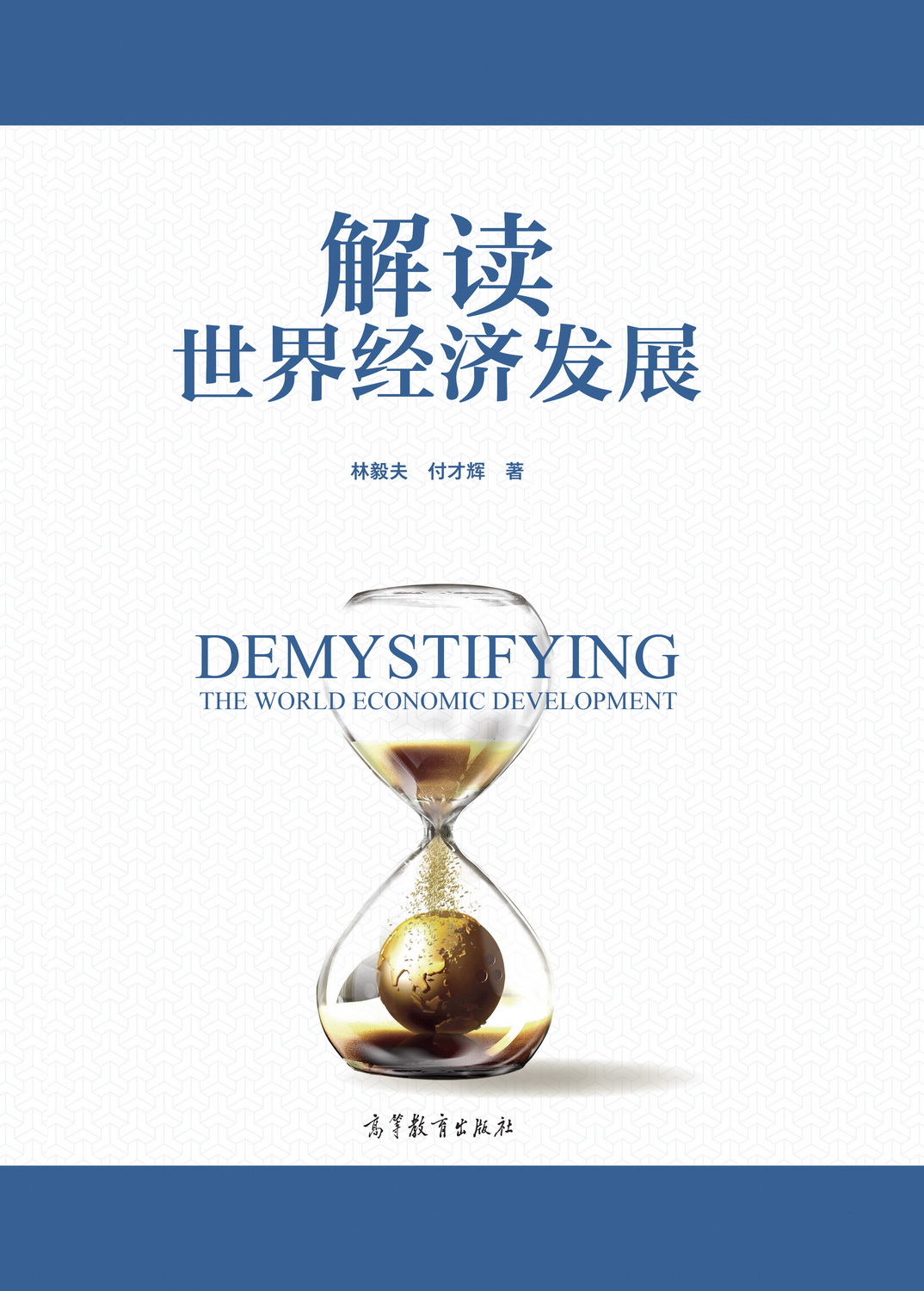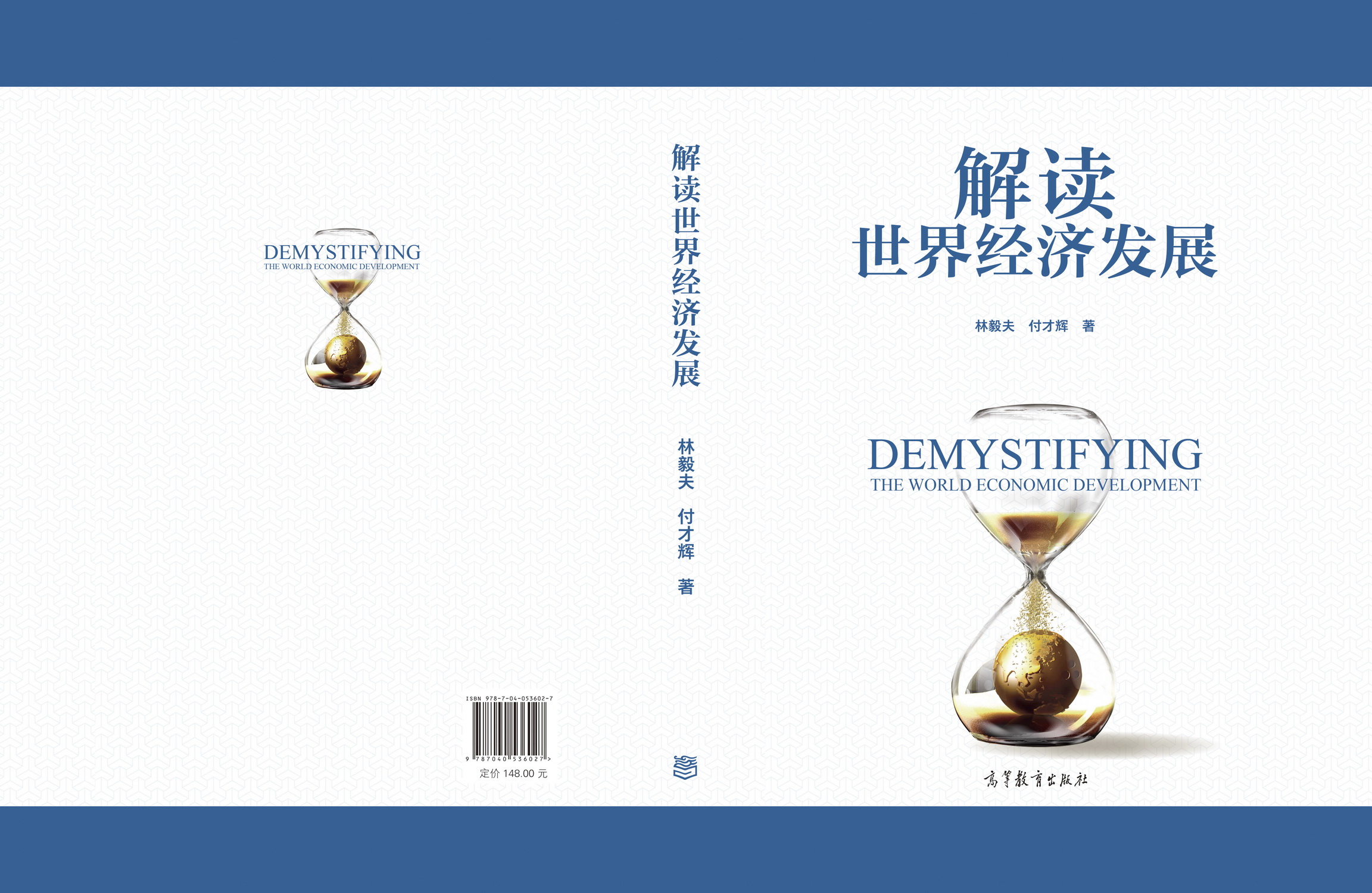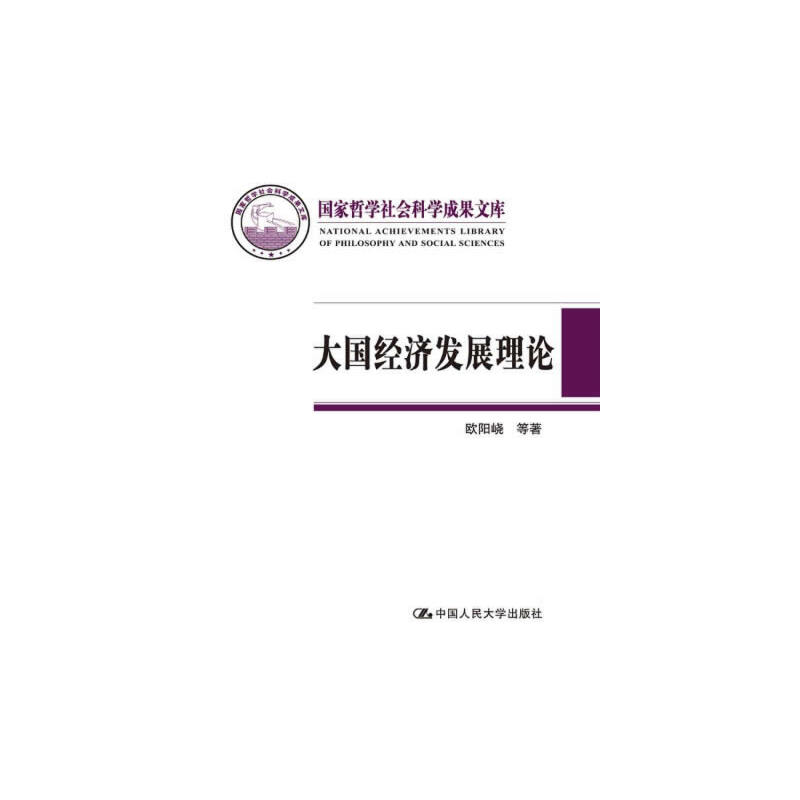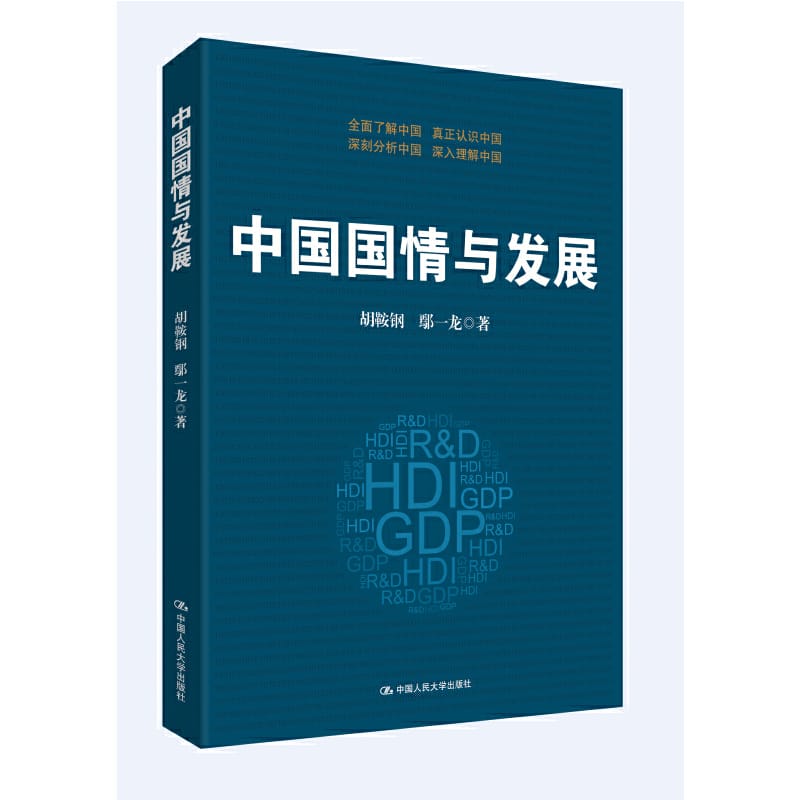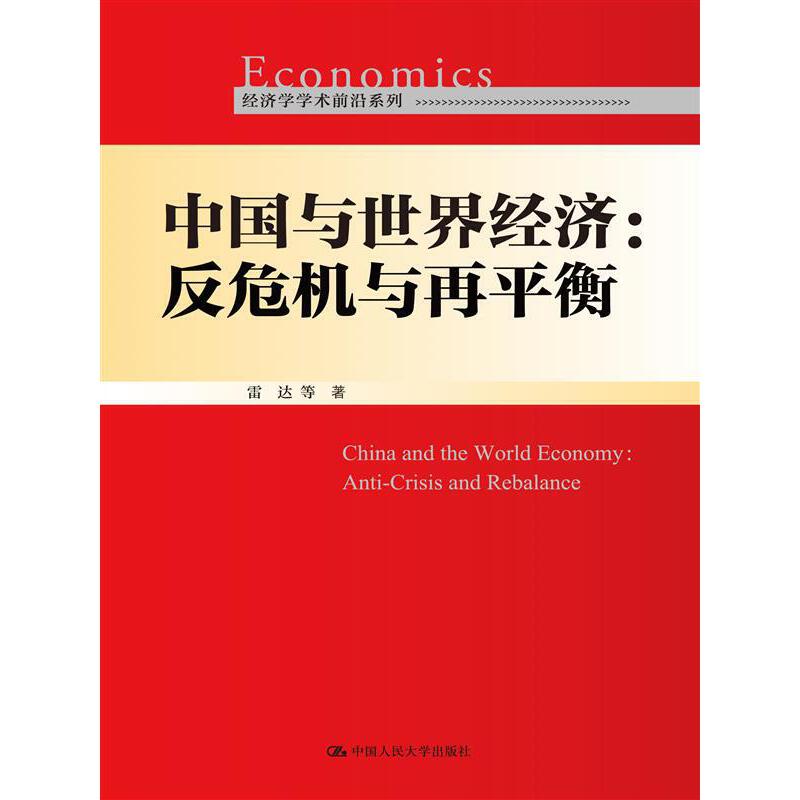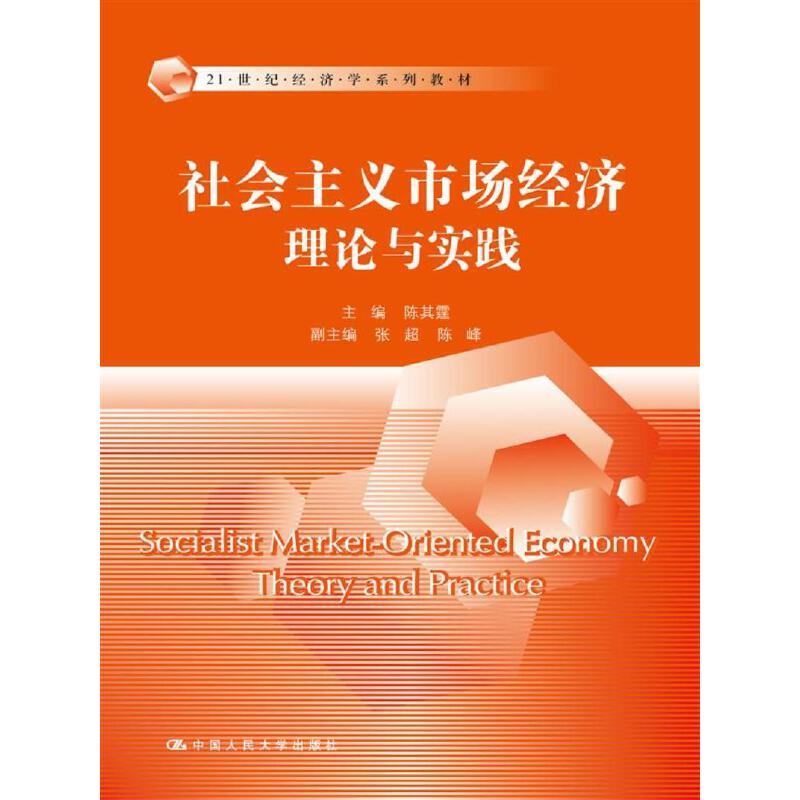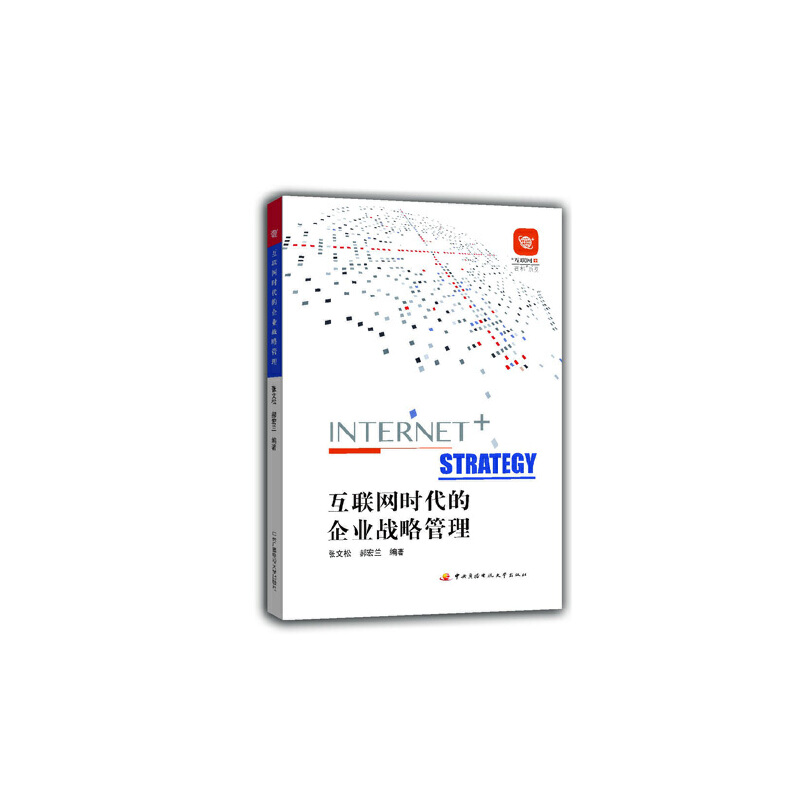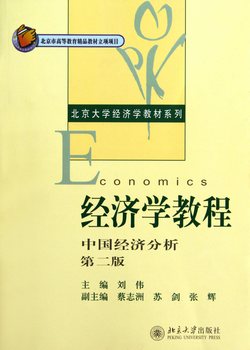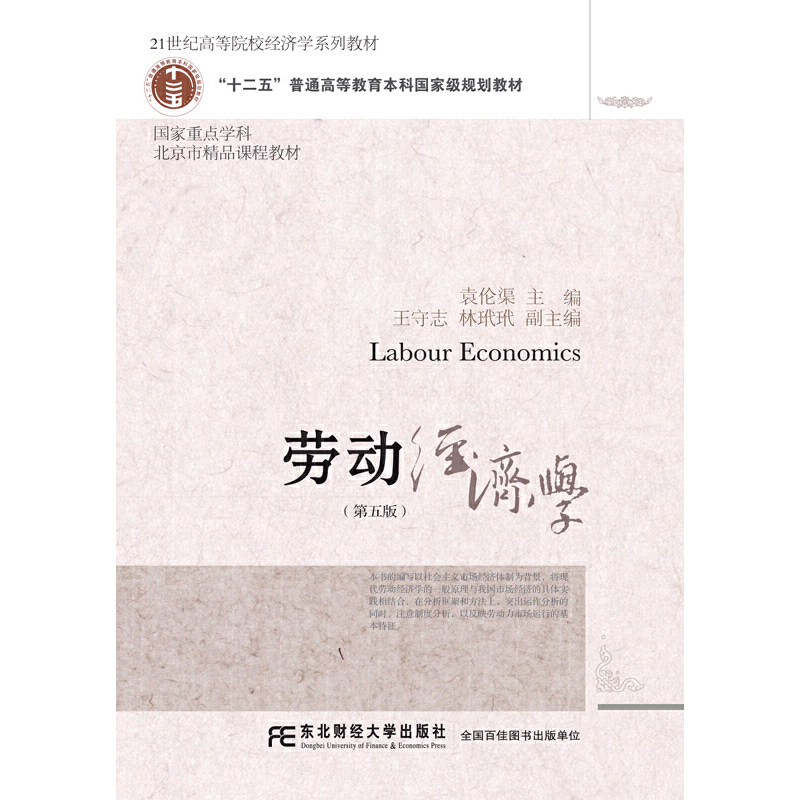解读世界经济发展
作者: 林毅夫,付才辉
出版时间:2020-06
出版社:高等教育出版社
- 高等教育出版社
- 9787040536027
- 1版
- 368682
- 46261209-4
- 精装
- 16开
- 2020-06
- 970
- 768
- 经济学
- 经济与贸易类
- 经济学类
- 本科 研究生及以上
本书集林毅夫出任世界银行首席经济学家十年来与其同仁关于世界经济发展研究之大成!如果说林毅夫所著的经典教材《解读中国经济》是新结构经济学在分析中国由盛而衰再由衰而盛的一个初步运用,那么本书则是新结构经济学在分析世界各国贫富分流以及如何走向共同繁荣的一个初步应用和检验。本书的基本目标是用最简洁的新结构经济学理论工具获取对世界经济结构变迁的历史、轨迹、现状、趋势与中国在其中的角色及其背后规律和政策方案最多的理解。本书配有大量史料、数据、案例与政策实践,可在世界经济、全球经济治理与新结构经济学等学科专业科研教学中使用,是读者了解世界经济发展的来龙去脉与“一带一路”等中国新时代全球化战略的权威学习读本。
前辅文
第1章 剧变的年代Chapter I The Age of Drastic Changes
1.1 规则在更换
1.1 Changing Rules
1.1.1 从G1到G7
1.1.1 From G1 to G7
1.1.2 从G7到G20
1.1.2 From G7 to G20
1.2 版图在更替
1.2 Changing Patterns
1.2.1 多元世界经济格局的形成:“1+100”的历史意义
1.2.1 Formation of the Pluralistic World Economic Pattern: The Historical Significance of “1+100”
1.2.2 新兴经济体的崛起:新兴经济体对老牌工业强国经济总量的超越
1.2.2 The Rise of Emerging Economies: Emerging Economies Surpass Established Industrial Powers in an Aggregate Economy
1.2.3 第三世界的崛起:中低收入经济体对高收入经济体经济总量的追赶
1.2.3 The Rise of the Third World: Middle and Low-Income Economies Try to Catch up with High-Income Economies in Aggregate Economy
1.2.4 亚非拉的崛起:亚非拉对欧美经济总量的超越
1.2.4 The Rise of Asia, Africa, and Latin America: Asia, Africa, and Latin America Surpass Europe and America in an Aggregate Economy
1.2.5 中国的崛起:中国对老牌工业强国经济总量的超越
1.2.5 The Rise of China: China Surpass Established Industrial Powers in an Aggregate Economy
1.2.6 中国带给世界经济结构转型升级的机遇与方法
1.2.6 Opportunities and Methods for the Transformation and Upgrading of the World Economic Structure by China
1.2.6.1 中国是世界经济发展与稳定的中流砥柱
1.2.6.1 China is the Mainstay for Promoting Global Economic Development, Peace, and Stability
1.2.6.2 中国工业革命的方法值得全世界发展中国家借鉴
1.2.6.2 China's Method of Industrial Revolution Could Be Studied By All Developing Countries Worldwide
1.3 理论的演进
1.3 Changing Theory
1.3.1 西潮并没有改变中国和广大发展中国家的命运
1.3.1 The Consensus Fails to Change the Outlook of China and the Vast Number of Developing Countries
1.3.2 从西潮到东风
1.3.2 Against the Consensus
1.3.2.1 第一代发展经济学:结构主义
1.3.2.1 The First Generation of Development Economics Post World War II: Structuralism
1.3.2.2 第二代发展经济学:新自由主义
1.3.2.2 The Second Generation of Development Economics Post World War II: Neoliberalism
1.3.2.3 第三代发展经济学:新结构经济学
1.3.2.3 The Third Generation of Development Economics Post World War II: New Structural Economics
1.3.3 新结构经济学学科理论体系概要
1.3.3 Brief Introduction to the Theoretical System of the New Structural Economics
1.3.4 理解经济结构变迁的新结构经济学理论要点
1.3.4 The Essence of New Structural Economics Theory for Understanding Economic Structure Transformation
1.4 思路的转变
1.4 Changing Concepts
1.4.1 主流发展思潮视角下的发展指南
1.4.1 Mainstream Development Concept
1.4.1.1 主流发展思潮的陈规:以发达国家作为标杆
1.4.1.1 Stereotype of the Mainstream Development Concept: Taking Developed Countries as a Benchmark
1.4.1.2 主流发展指南的代表:瑞士达沃斯论坛的《全球竞争力报告》
1.4.1.2 Representatives of the Mainstream Development Guideline: The Global Competitiveness Report of the Davos Forum in Switzerland
1.4.2 新结构经济学视角下的发展指南
1.4.2 New Structural Economics Development Guideline
1.4.2.1 新结构经济学的发展思想:从每个国家自身出发
1.4.2.1 Development Concept of New Structural Economics: Starting from the Local Condition of Each Country
1.4.2.2 新结构经济学的发展指南:新结构经济学之路
1.4.2.2 Development Guidelines of New Structural Economics: The Road to New Structural Economics
1.4.3 人类发展思想的最大挑战:布隆迪如何转型升级为瑞士
1.4.3 The Greatest Challenge to the Concept of Human Development: How can Burundi Transform and Upgrade to Switzerland?
第2章 经济结构转型升级是发展的关键Chapter II Transformation and Upgrading of Economic Structure is the Key to Development
2.1 按经济结构特征断代的世界历史
2.1 World History Divided by Economic Structural Characteristics
2.2 前现代社会的经济结构变迁
2.2 Economic Structural Change of Pre-modern Society
2.2.1 马尔萨斯陷阱
2.2.1 Malthusian Trap
2.2.2 马尔萨斯陷阱的新结构经济学
2.2.2 New Structural Economics of Malthusian Trap
2.2.3 大航海与康乾“番薯盛世”的人口大爆炸
2.2.3 Population Explosion During the Age of Exploration and the High Qing
2.2.4 全球化与当今穷国的“超前城市化”
2.2.4 Globalization and Current “Over Urbanization” of Poor Countries
2.3 工业革命造就了当今的发达经济体
2.3 The Industrial Revolution has Raised up the Current Developed Economies
2.3.1 工业革命与西方发达国家的崛起
2.3.1 The Industrial Revolution and the Rise of Western Developed Countries
2.3.2 持续的结构转型升级是工业革命的本质
2.3.2 Continuous Structural Transformation and Upgrading is the Essence of the Industrial Revolution
2.3.3 亚当·斯密及其继承者的学说远离了工业革命
2.3.3 Doctrines of Adam Smith and his Successors Depart from the Industrial Revolution
2.4 未能实现持续的经济结构转型是发展中经济体的顽疾
2.4 Developing Economies Face Failure in Continuous Transformations of Economic Structure
2.4.1 发展中经济体艰难的结构转型
2.4.1 Arduous Efforts Needed for Developing Economics to Realize Structural Transformation
2.4.2 结构转型与经济收敛
2.4.2 Structural Transformation and Economic Convergence
2.5 如何实现持续的经济结构转型升级以获得经济增长
2.5 How to Achieve Sustained Economic Transformation and Upgrading for Economic Growth
2.5.1 没有结构差异的主流理论:方向错了道路对不了
2.5.1 The Mainstream Theory with Structure: The Wrong Path Caused by the Wrong Direction
2.5.2 二战后的发展思想先驱:方向正确但道路错误
2.5.2 Pioneer of Development Concept Post World War II: The Wrong Path in the Correct Direction
2.5.3 经济结构转型升级对经济增长贡献的核算结果
2.5.3 Results of the Calculation of the Contribution of the Economic Structure Transformation and Upgrading of Economic Growth
2.5.3.1 全球概况
2.5.3.1 Global Overview
2.5.3.2 前沿发达经济体的经济增长核算结果
2.5.3.2 Economic Growth of Leading Developed Economies
2.5.3.3 前沿内部发展中经济体的经济增长核算结果
2.5.3.3 Economic Growth of Leading Developing Economies
2.6 结构转型升级的方向与道路:新结构经济学
2.6 Direction and Road for Structural Transformation and Upgrading: New Structural Economics
2.6.1 由禀赋结构所支配的结构变迁方程
2.6.1 Structural Transition Equation Determined by Endowment Structure
2.6.1.1 新古典经济学:古典经济学的边际革命
2.6.1.1 Neoclassical Economics: Classical Economics + Marginal Revolution
2.6.1.2 新结构经济学:新古典经济学的结构革命
2.6.1.2 New Structural Economics: Neoclassical Economics + Structural Revolution
2.6.2 用结构变迁方程来预测世界经济结构变迁
2.6.2 Using Structural Transition Equation to Predict Change in Global Economic Structure
2.6.2.1 全球预测的情况
2.6.2.1 Prediction of the Situation Worldwide
2.6.2.2 第二次世界大战后13个发展典范的预测情况
2.6.2.2 Predictions of 13 Typical Examples of Development Post World War II
2.7 “上层建筑”如何随经济基础变迁而变迁
2.7 How the “Superstructure” Changes with the Economic Base
2.7.1 马克思历史唯物主义方法论
2.7.1 Marxism Methodology of Historical Materialism
2.7.2 以历史唯物主义辩证法为指导避免“盲人摸象”与“本末倒置”
2.7.2 Avoiding the Mistakes of “Drawing Conclusions Based on Partial Information” and “Putting the Cart before the Horse” under the Guidance of Historical Materialism Dialectics
2.8 制度前提决定论的谬误
2.8 Fallacy of Institutional Determinism
2.8.1 制度是重要的但更是内生的
2.8.1 Institution is Important and Endogenous
2.8.2 当今发达经济体“先进制度”的演进史
2.8.2 Evolution of the “Advanced Institution” of Currently Developed Economies
2.8.2.1 民主制度变迁简史
2.8.2.1 Brief History of the Changes in Democratic Institutions
2.8.2.2 官僚和司法制度变迁简史
2.8.2.2 Brief History of the Changes in Bureaucracy and the Judicial System
2.8.2.3 知识产权制度变迁简史
2.8.2.3 Brief History of the Changes to the Intellectual Property System
2.8.2.4 公司治理制度变迁简史
2.8.2.4 Brief History of the Changes to the Corporate Governance System
2.8.2.5 社会福利与劳工制度变迁简史
2.8.2.5 Brief History of the Changes to the Social Welfare and Labor System
2.8.2.6 教育制度变迁简史
2.8.2.6 Brief History of the Changes of the Education System
2.8.3 并未给发展中经济体带来繁荣的制度赶超:被高估的制度神话
2.8.3 Failure to Bring Prosperity to Developing Countries with Institutional Progress: The Overestimated Institutional Myth
第3章 追踪世界经济结构转型升级的轨迹Chapter III Tracing the Trajectory of the Transformation and Upgrading of the World Economic Structure
3.1 工业革命不是一夜爆发的
3.1 The Industrial Revolution Didn't Happen Overnight
3.1.1 1500—1750年西欧的经济结构变迁
3.1.1 Changes in the Economic Structure of Western Europe from 1500 to 1750
3.1.2 资本的原始积累:圈地运动与奴隶贸易
3.1.2 Primitive Accumulation of Capital: Enclosure Movement and Slave Trade
3.2 英美工业革命的历程
3.2 History of the Industrial Revolution in the UK and the US
3.2.1 工业革命的“胚胎发育模式”
3.2.1 “Embryonic Development Model” of the Industrial Revolution
3.2.2 英国工业革命的历程
3.2.2 Process of the Industrial Revolution in the UK
3.2.3 美国工业革命的历程
3.2.3 Process of the Industrial Revolution in the US
3.3 生产结构随禀赋结构拾级而上的次序特征
3.3 Characteristics of Step-by-Step Development of Production Structure Following the Endowment Structure
3.3.1 当今一些发达经济体三次产业的历史变迁特征
3.3.1 Characteristics of Historical Change of the Three Industries of Current Developed Economies
3.3.2 制造业及其细分行业与细分产品的结构变迁特征
3.3.2 Characteristics of Structural Change to the Manufacturing Industry, its Segment Industries, and Segment Products
3.3.3 全球技术创新结构随禀赋结构升级的特征
3.3.3 Characteristics of Global Technological Innovation Structure Upgrades Based on the Endowment Structure
3.3.4 经济结构变迁是一个连续的循序渐进过程
3.3.4 Economic Structural Transformation is a Continuous and Gradual Process
3.4 历史上不同经济结构变迁方式的经验教训
3.4 Lessons Learned from Different Economic Structural Transformations in History
3.4.1 历史上那些颠倒产业发展次序的惨痛教训
3.4.1 Painful History Lessons Learned from Reversing the Order of Industrial Development
3.4.2 历史上那些遵循产业发展次序的成功经验
3.4.2 Successful Historical Experience from Following the Order of Industrial Development
3.4.3 结构扭曲与经济停滞:全球的经验实证
3.4.3 Structural Distortion and Economic Stagnation: Global Empirical Evidence
3.5 “付-林图”:测算经济结构变迁轨迹
3.5 “Fu-Lin Diagram”: Measuring the Trajectory of Economic Structural Transformation
3.6 世界经济结构的变迁轨迹
3.6 Trajectory of Global Economic Structural Transformation
3.6.1 禀赋结构升级与产业结构升级的指标
3.6.1 Indicators for Upgrading of Endowment Structure and Industrial Structure
3.6.2 全球的经济结构分布概况
3.6.2 Overview of Global Economic Structural Distribution
3.6.3 经济结构变迁轨迹的全球概貌
3.6.3 Overview of the Trajectory of Global Economic Structural Transformation
3.6.4 世界经济结构变迁前沿的特征:不确定性
3.6.4 Characteristics of the Frontiers of Global Economic Structural Transformation: Uncertainty
3.6.5 世界经济结构变迁内部的特征:后来者优势
3.6.5 Characteristics of the Interior of Global Economic Structural Transformation: Latecomers Advantage
3.6.6 落后经济体的特征:机会与障碍
3.6.6 Characteristics of Backward Economies: Opportunities and Obstacles
3.6.7 中等收入陷阱的特征:一团糨糊
3.6.7 Characteristics of the Middle Income Trap: Chaos
第4章 寻找经济结构转型升级路径的典范Chapter IV Searching for Typical Examples of Economic Structural Transformation and Upgrading
4.1 第二次世界大战后经济发展的典范
4.1 Typical Examples of Economic Development Post World War II
4.2 发展典范的特征事实
4.2 Characteristics of the Typical Examples
4.2.1 对外开放
4.2.1 Opening to the Outside World
4.2.2 宏观稳定
4.2.2 Stable Macroeconomy
4.2.3 禀赋积累
4.2.3 Endowment Accumulation
4.2.4 有效市场
4.2.4 Effective Market
4.2.5 有为政府
4.2.5 Promising Governance
4.3 发展典范特征事实的新结构经济学诠释
4.3 Interpretation of the Characteristics of Typical Examples of Development with the New Structural Economics
4.4 发展典范的经济结构转型升级路径拟合及其特征
4.4 Path Fitting of the Economic Structure Transformation and Upgrading of the Typical Examples of Development and Characteristics
4.4.1 中国的经济结构转型升级路径拟合及其特征
4.4.1 Path Fitting of the Economic Structural Transformation and Upgrading of China and its Characteristics
4.4.2 中国香港的经济结构转型升级路径拟合及其特征
4.4.2 Path Fitting of the Economic Structural Transformation and Upgrading of Hong Kong SAR of China and its Characteristics
4.4.3 中国台湾的经济结构转型升级路径特征
4.4.3 Path Fitting of the Economic Structural Transformation and Upgrading of Taiwan of China and its Characteristics
4.4.4 韩国的经济结构转型升级路径拟合及其特征
4.4.4 Path Fitting of the Economic Structural Transformation and Upgrading of South Korea and its Characteristics
4.4.5 新加坡的经济结构转型升级路径拟合及其特征
4.4.5 Path Fitting of the Economic Structural Transformation and Upgrading of Singapore and its Characteristics
4.4.6 日本的经济结构转型升级路径拟合及其特征
4.4.6 Path Fitting of the Economic Structural Transformation and Upgrading of Japan and its Characteristics
4.4.7 印度尼西亚的经济结构转型升级路径拟合及其特征
4.4.7 Path Fitting of the Economic Structural Transformation and Upgrading of Indonesia and its Characteristics
4.4.8 马来西亚的经济结构转型升级路径拟合及其特征
4.4.8 Path Fitting of the Economic Structural Transformation and Upgrading of Malaysia and its Characteristics
4.4.9 泰国的经济结构转型升级路径拟合及其特征
4.4.9 Path Fitting of the Economic Structural Transformation and Upgrading of Thailand and its Characteristics
4.4.10 阿曼的经济结构转型升级路径拟合及其特征
4.4.10 Path Fitting of the Economic Structural Transformation and Upgrading of Oman and its Characteristics
4.4.11 马耳他的经济结构转型升级路径拟合及其特征
4.4.11 Path Fitting of the Economic Structural Transformation and Upgrading of Malta and its Characteristics
4.4.12 博茨瓦纳的经济结构转型升级路径拟合及其特征
4.4.12 Path Fitting of the Economic Structural Transformation and Upgrading of Botswana and its Characteristics
4.4.13 巴西的经济结构转型升级路径拟合及其特征
4.4.13 Path Fitting of the Economic Structural Transformation and Upgrading of Brazil and its Characteristics
4.5 寻找经济结构转型升级新结构经济学之路的最佳历史实践标杆
4.5 The Benchmark and Best Historical Practices of Economic Structural Transformation and Upgrading under the Guidance of New Structural Economics
4.5.1 经济结构转型升级路径的最佳实践标杆:非农产业
4.5.1 The Benchmark and Best Practice of Economic Structural Transformation and Upgrading: Non-agricultural Industry
4.5.2 经济结构转型升级路径的最佳实践标杆:工业
4.5.2 The Benchmark and Best Practice of Economic Structural Transformation and Upgrading: Industry
4.5.3 经济结构转型升级路径的最佳实践标杆:服务业
4.5.3 The Benchmark and Best Practice of Economic Structural Transformation and Upgrading: Service Industry
4.6 加速禀赋结构升级的高储蓄率之谜的谜底:按照比较优势不断转型升级
4.6 The Answer to the Mystery of High Savings Rate for Accelerating the Upgrading of the Endowment Structure: Continuous Transformation and Upgrading According to Comparative Advantages
第5章 监测世界经济结构变迁的轨迹Chapter V Monitoring the Trajectory of Global Economic Structural Transformation
5.1 “尺有所短,寸有所长”
5.1 “Countries Big and Small all Have Their Own Merits”
5.2 经济结构转型升级路径对最佳实践标杆的达标情况:非农产业
5.2 The Benchmark and Best Practices of Economic Structural Transformation and Upgrading to the Standard: Non-agricultural Industry
5.2.1 非农产业结构转型升级偏离标杆程度的全球概况
5.2.1 Global Overview of the Deviation of the Non-agricultural Industrial Structure Transformation and Upgrading from the Benchmark
5.2.2 非农产业结构转型升级达标程度的全球概况
5.2.2 Global Overview of the Non-agricultural Industrial Structure Transformation and Upgrading up to the Standard
5.3 经济结构转型升级路径对最佳实践标杆的达标情况:工业
5.3 The Benchmark and Best Practice of Economic Structure Transformation and Upgrading to the Standard: Industry
5.3.1 工业结构转型升级偏离标杆程度的全球概况
5.3.1 Global Overview of the Deviation of the Industrial Structure Transformation and Upgrading from the Benchmark
5.3.2 工业结构转型升级轨迹达标程度的全球概况
5.3.2 Global Overview of the Industrial Structure Transformation and Upgrading Trajectory up to the Standard
5.4 经济结构转型升级路径对最佳实践标杆的达标情况:服务业
5.4 The Benchmark and Best Practices of Economic Structural Transformation and Upgrading to the Standard: Service Industry
5.4.1 服务业结构转型升级轨迹偏离标杆程度的全球概况
5.4.1 Global Overview of the Deviation of the Service Industrial Structure Transformation and Upgrading Trajectory from the Benchmark
5.4.2 服务业结构转型升级轨迹达标程度的全球概况
5.4.2 Global Overview of the Service Industrial Structure Transformation and Upgrading Trajectory to the Standard
5.5 世界经济结构转型升级趋势在不断好转
5.5 Constantly Improving Trend of Global Economic Structural Transformation and Upgrading
5.6 评价世界经济结构转型升级的效果
5.6 Evaluation of the Effect of Global Economic Structural Transformation and Upgrading
5.6.1 经济结构转型升级达标程度绩效的评估模型Ⅰ及其结果
5.6.1 Model I for Evaluation of the Performance of Economic Structural Transformation and Upgrading to the Standard and the Results
5.6.2 经济结构转型升级达标程度绩效的评估模型Ⅱ及其结果
5.6.2 Model II for Evaluation of the Performance of the Economic Structural Transformation and Upgrading to the Standard and the Results
5.7 遵循比较优势进行持续的经济结构转型升级是经济发展成功的保证
5.7 Continuous Economic Structural Transformation and Upgrading in Accordance with Comparative Advantages Guarantees Successful Economic Development
5.8 违背比较优势的经济结构转型升级是导致发展陷阱的根源
5.8 Economic Structural Transformation and Upgrading Against Comparative Advantages is the Root Cause of Development Traps
5.8.1 乡村原始工业化缺失与低收入陷阱
5.8.1 Absence of Primitive Industrialization in Rural Areas and Low-Income Trap
5.8.2 违背比较优势的产业升级与中等收入陷阱
5.8.2 Industrial Upgrading Against Comparative Advantage and Middle-Income Trap
5.9 违背比较优势的发展战略将错失全球化发展机遇
5.9 Development Strategy Against Comparative Advantage Will Miss Development Opportunities in Globalization
5.9.1 全球化的历程与不同发展阶段国家参与全球化的概况
5.9.1 The Process of Globalization and the Participation in Globalization of Countries at Differing Development Stages
5.9.2 谜底揭晓:违背比较优势是很多发展中经济体无法利用外贸实现发展的根源
5.9.2 Answer: Violation of Comparative Advantage is the Root Cause of Failure to Promote Development via Foreign Trade in Many Developing Economies
5.9.3 谜底揭晓:违背比较优势是很多发展中经济体无法利用外资实现发展的根源
5.9.3 Answer: Violation of Comparative Advantage is the Root Cause of Failure to Promote Development with Foreign Capital in Many Developing Economies
5.9.4 中国改革开放的经验——“两头在外”:发挥比较优势参与全球化实现结构转型
5.9.4 Experience of China in the Reform and Opening-Up—Importing Raw and Semi-finished Materials from Abroad: Participating in Globalization with Comparative Advantage to Realize Structural Transformation
第6章 世界经济结构转型升级中的机遇Chapter VI Opportunities in Global Economic Structural Transformation and Upgrading
6.1 无工不富:制造业是世界财富的发动机和就业水池
6.1 Industry is for Prosperity: Manufacturing is the Engine of Global Wealth and the Pool for Employment
6.2 中国的脱贫成就与人类艰难的反贫困斗争:就业是发展的基石
6.2 Achievement of China in Poverty Alleviation and the Arduous Efforts of Mankind Against Poverty: Employment is the Cornerstone of Development
6.3 全球制造业就业结构随禀赋结构变化而变化的一般规律与特征
6.3 The General Laws and Characteristics of Employment Structural Changes for the Manufacturing Industry with the Change of Endowment Structure Worldwide
6.3.1 全球制造业就业结构随禀赋结构变化而变化的一般规律
6.3.1 The General Laws of the Change of Employment Structure for the Manufacturing Industry with the Change of Endowment Structure Worldwide
6.3.2 全球制造业就业结构分布与变迁概貌
6.3.2 Overview of the Distribution and Change of Employment Structure of the Manufacturing Industry Worldwide
6.3.3 全球制造业就业结构变迁曲线及其就业缺口估算
6.3.3 Curve to the Change of Employment Structure of the Manufacturing Industry Worldwide and Employment Gap Estimation
6.4 全球各地区制造业就业结构变迁趋势
6.4 Trend of Structural Changes for Employment in the Manufacturing Industry Worldwide
6.4.1 持续不断的亚洲“雁行模式”:东亚奇迹的秘密
6.4.1 Continuous Flying Geese Paradigm in Asia: The Secret of the East Asian Miracle
6.4.2 南亚与撒哈拉以南非洲地区急需发展劳动力密集型制造业来脱贫
6.4.2 South Asia and Sub-Saharan Africa are in Urgent Need of Developing Labor-intensive Manufacturing for Poverty Alleviation
6.4.3 中东与北非以及拉美需要转型升级制造业以摆脱中等收入陷阱
6.4.3 Middle East, North Africa, and Latin America need to Transform and Upgrade the Manufacturing Industry to Get Out of the Middle-Income Trap
6.4.4 欧洲和中亚地区需要调整违背比较优势的制造业重获竞争优势
6.4.4 Europe and Central Asia need to Adjust the Manufacturing Industry Against Comparative Advantage to Regain their Competitive Advantage
6.4.5 高收入经济体的再工业化与拓展世界前沿的产业政策
6.4.5 Re-industrialization of High-income Economies and Industrial Policies for Expansion of Global Frontiers
6.4.6 世界经济结构变迁中的工作性质变迁和就业结构极化
6.4.6 Changes in the Nature of Work and Polarization of Employment Structure in Global Economic Structural Transformation
6.5 全球制造业差序格局与南南合作的产业基础以及中国的地位
6.5 The Pattern of Difference Sequence for Global Manufacturing, the Industrial Basis for South-South cooperation, and the Position of China
6.5.1 全球制造业差序格局
6.5.1 The Pattern of Difference Sequence for Global Manufacturing
6.5.2 南北合作的产业基础:以中美为例
6.5.2 Industrial Basis of North-South Cooperation: Taking the Cooperation between China and the United States as an Example
6.5.3 南南合作的产业基础:以中非为例
6.5.3 Industrial Basis of South-South Cooperation: Taking the Cooperation between China and Africa as an Example
6.5.4 中国在南南合作中的地位:“领头龙模式”
6.5.4 China's Position in South-South Cooperation: “Leading Dragon Model”
6.6 他山之石:日本和中国重庆如何把握全球电子信息产业转移的机遇
6.6 Stones from other Hills: How did Japan and Chongqing, China Grasp the Opportunity to Participate in the Transfer of Global Electronic Information Industry
6.6.1 日本如何把握始于美国的半导体产业转移机会
6.6.1 How did Japan Grasp the Opportunity in the Transfer of Semiconductor Industry from the United States
6.6.2 中国重庆如何把握电子信息产业在全球和国内的产业转移机会
6.6.2 How did Chongqing Grasp the Opportunity in the Transfer of Electronic Information Industry in China and Worldwide
第7章 克服世界经济结构转型升级的瓶颈Chapter VII Breaking the “Bottleneck” to Global Economic Structural Transformation and Upgrading
7.1 基础设施:是障碍也是随手可牵的“替罪羊”
7.1 Infrastructure: The Obstacle and Easily Taken “Scapegoat”
7.2 从局部到整体渐进式改善基础设施:中国经验
7.2 Gradual Improvement of the Infrastructure from Parts to the Whole: The China Experience
7.2.1 政府能力与基础设施建设
7.2.1 Government Capacity and Infrastructure Construction
7.2.2 中国的经济开发区变迁及其效果
7.2.2 Changes of Economic Development Zones in China and their Effects
7.2.3 为何经济特区通常未能形成有竞争能力的产业集群
7.2.3 Why do Special Economic Zones Usually Fail to Develop Competitive Industrial Clusters
7.2.4 建立成功的经济特区和工业园区的一些指导性原则
7.2.4 Some Guiding Principles for the Establishment of Successful Special Economic Zones and Industrial Parks
7.3 世界基础设施建设概况:进展、趋势与缺口
7.3 Overview of World Infrastructure Development: Progress, Trends and Gaps
7.3.1 基础设施的分类与进展
7.3.1 Classification and Progress of Infrastructure
7.3.1.1 全球水利基础设施建设进展概况
7.3.1.1 Water Infrastructure Construction
7.3.1.2 世界电力基础设施建设进展概况
7.3.1.2 Power Infrastructure Construction
7.3.1.3 世界海运基础设施建设进展概况
7.3.1.3 Shipping Infrastructure Construction
7.3.1.4 世界铁路基础设施建设进展概况
7.3.1.4 Railway Infrastructure Construction
7.3.1.5 世界航空基础设施建设进展概况
7.3.1.5 Aviation Infrastructure Construction
7.3.1.6 世界电信基础设施建设进展概况
7.3.1.6 Telecommunication Infrastructure Construction
7.3.1.7 世界互联网基础设施建设进展概况
7.3.1.7 Internet Infrastructure Construction
7.3.1.8 世界能源基础设施建设进展概况
7.3.1.8 Energy Infrastructure Construction
7.3.1.9 世界医疗卫生基础设施建设进展概况
7.3.1.9 Health Infrastructure Construction
7.3.2 基础设施的评估与缺口
7.3.2 Infrastructure Assessment and Gaps
7.3.2.1 基础设施随发展阶段不断升级
7.3.2.1 The Infrastructure is Upgrading with the Development Phase
7.3.2.2 全球基础设施投资的近期状况
7.3.2.2 Recent Status of Global Infrastructure Investment
7.3.2.3 全球基础设施投资的未来缺口
7.3.2.3 Future Gaps in Global Infrastructure Investment
7.3.2.4 为全球基础设施投资缺口融资
7.3.2.4 Financing the Global Infrastructure Investment Gap
7.4 发达经济体的基础设施投资:改造升级
7.4 Investment of Developed Economies into Infrastructure: Transformation and Upgrading
7.5 发展中国家的基础设施投资:消除瓶颈
7.5 Investment of Developing Countries into Infrastructure: Eliminating Bottlenecks
7.6 对发展中国家关键的是比较优势产业与基础设施建设良性互动
7.6 The Key for Developing Countries is the Positive Interaction between Comparative Advantage Industry and Infrastructure Construction
第8章 世界经济结构转型升级中的中国Chapter VIII China in the Global Economic Structural Transformation and Upgrading
8.1 中国在世界经济结构转型升级中的方位
8.1 Position of China in the Global Economic Structural Transformation and Upgrading
8.1.1 中国的经济体量将重回世界第一
8.1.1 China Returns to the Largest Economy in the World
8.1.2 中国的经济发展水平世界居中
8.1.2 China's Economic Development is still in the Middle of the World
8.1.3 中国经济结构层次的复杂多样性
8.1.3 There is Still Great Complexity and Diversity for the Development of Different Regions in China
8.1.4 中国与世界的经济结构深度耦合
8.1.4 In-depth Coupling of China and the Global Economic Structure
8.1.5 中国的差异化全球化:与发达国家和发展中国家的不同耦合方向
8.1.5 China's Differentiation and Globalization: Different Directions from those of Developed Countries and Other Developing Countries
8.1.6 中国与世界经济联系的多样性:不同国家不同行业与中国的不同联系
8.1.6 The Diversity of China's Economic Links with the World: Different Links Between Different Industries or Different Countries and China
8.2 中国在世界经济结构转型升级中的力量
8.2 China's Strength in the Global Economic Structural Transformation and Upgrading
8.2.1 中国是世界经济增长的引擎
8.2.1 China is the Engine to the World's Economic Growth
8.2.2 中国拥有全球最具活力的消费市场
8.2.2 China Boasts a Tremendous Healthy Consumption Market
8.2.3 中国将长期居于全球最大的贸易国
8.2.3 China will Remain the Largest Trader Worldwide for a Long Time
8.2.4 中国是全球最具投资吸引力的地区
8.2.4 China is the Most Attractive Region for Investment Worldwide
8.2.5 中国拥有最具实力的工业化能力与基础设施建设能力
8.2.5 China has the Largest Production Capacity and the Greatest Capacity for Infrastructure Construction
8.2.6 中国已经成为净资本输出国并位居对外投资流量大国
8.2.6 China has Become an Exporter of Net Capital and a Major Player of Overseas Investment
8.3 中国与发达国家经济结构转型升级的匹配
8.3 Matching of China with the Transformation and Upgrading of Economic Structures from Developed Countries
8.3.1 充分利用中国与高收入经济体互补的比较优势深化合作
8.3.1 Making Full Use of China's Comparative Advantage in Relation to High-Income Economics for Deepening Cooperation
8.3.2 发达国家依然是中国通过学习利用后来者优势的对象
8.3.2 Developed Countries are Still the Object for China to Use as a Model to Study: The Advantages of Latecomers
8.3.3 去发达国家投资促进中国与发达经济体的经济结构转型升级
8.3.3 Investment in Developed Countries can Promote the Transformation and Upgrading of Economic Structure for both China and Developed Economies
8.3.3.1 中国在北美洲的投资及其与北美洲的经济结构匹配情况
8.3.3.1 Investment of China in North America and the Matching with the Industry and Infrastructure Construction of North America
8.3.3.2 中国在欧洲的投资及其与欧洲的经济结构匹配情况
8.3.3.2 Investment of China in Europe and the Matching with the Industry and Infrastructure Construction of Europe
8.3.3.3 中国在大洋洲的投资及其与大洋洲的经济结构匹配情况
8.3.3.3 Investment of China in Oceania and the Matching with the Industry and Infrastructure Construction of Oceania
8.3.4 从发达国家“引进来”促进中国与发达经济体的经济结构转型升级
8.3.4 “Bringing In” Investment from Developed Countries can Promote the Transformation and Upgrading of Economic Structure for both China and Developed Economies
8.3.4.1 中国“引进来”及其与中国的经济结构匹配情况
8.3.4.1 Investment “Brought In” by China and the Matching with the Economic Structure of China
8.3.4.2 中国各行业“引进来”推进转型升级的情况
8.3.4.2 “Bringing In” Investment by Different Industries in China for Promoting Upgrading and Transformation
8.3.4.3 中国各地区“引进来”及其与当地经济结构匹配情况
8.3.4.3 Investment “Brought In” from Different Regions in China and the Matching with the Local Economic Structure
8.4 中国与发展中国家经济结构转型升级的匹配
8.4 Matching of China with the Transformation and Upgrading of Economic Structure of Developing Countries
8.4.1 中国能带给发展中经济体的产业转移机会与基础设施建设能力
8.4.1 China is Capable of Providing Opportunities for Developing Economies in terms of Industrial Transfer and Infrastructure Construction
8.4.2 中国对亚洲的投资及其与亚洲的经济结构的匹配情况
8.4.2 Investment of China in Asia and the Matching with the Industry and Infrastructure Construction of Asia
8.4.3 中国对非洲的投资及其与非洲的经济结构匹配情况
8.4.3 Investment of China in Africa and the Matching with the Industry and Infrastructure Construction of Africa
8.4.4 中国对拉丁美洲的投资及其与拉美的经济结构匹配情况
8.4.4 Investment of China in Latin America and the Matching with the Industry and Infrastructure Construction of Latin America
8.5 新时期中国融入世界构建开放型经济新体制的战略体系
8.5 Strategic System for China to Integrate into the World and Construct an Open Economic System in the New Era
8.5.1 新时期中国融入世界构建开放型经济新体制的比较优势
8.5.1 Comparative Advantage for China to Integrate into the World and Construct an Open Economic System in the New Era
8.5.2 新时期中国融入世界构建开放型经济新体制的战略架构与自贸区
8.5.2 Strategic Structure for China to Integrate into the World and Construct an Open Economic System in the New Era and Free Trade Zone
第9章 “一带一路”助推世界经济发展Chapter IX Promotion of Global Economic Development through the Belt and Road Initiative
9.1 “一带一路”倡议的比较优势
9.1 Comparative Advantage of the Belt and Road Initiative
9.2 “一带一路”倡议的内容与进展
9.2 Contents and Progress of the Belt and Road Initiative
9.3 “一带一路”倡议的产能合作与经贸合作区
9.3 Capacity Cooperation and Economic Cooperation Zone of the Belt and Road Initiative
9.4 “一带一路”倡议与经贸投资成效
9.4 The Belt and Road Initiative and Effect of Economic and Trade Investment
9.5 “一带一路”倡议与企业转型升级
9.5 The Belt and Road Initiative and Transformation and Upgrading to Enterprise
9.6 “一带一路”倡议与人民币国际化
9.6 The Belt and Road Initiative and the Internationalization of the Chinese yuan (RMB)
9.7 提高“一带一路”沿线基础设施投资回报率与“耐心资本”
9.7 Improving the Rates of Returns on Investment into Infrastructure along the Belt and Road and “Patient Capital”
9.8 世界各国如何发挥比较优势参与“一带一路”
9.8 How can Countries Worldwide Become Fully Engaged and Make Full Use of their Comparative Advantage in the Belt and Road Initiative
9.8.1 “一带一路”沿线国家与中国的贸易比较优势互补性
9.8.1 Complementarity and Comparative Strengths of Trade Between the Belt and Road Countries and China
9.8.2 “一带一路”沿线国家与中国的产业比较优势互补性
9.8.2 Complementarity and Comparative Strengths of Industry of the Belt and Road Countries and China
9.9 中国各地如何发挥比较优势参与“一带一路”
9.9 How can Different Regions in China Become Fully Engaged and Make Full Use of their Comparative Advantage in the Belt and Road Initiative
第10章 世界经济的繁荣稳定包容之路Chapter X The Road to Prosperity, Stability, and Inclusiveness in the World Economy
10.1 战胜命运
10.1 Beating the Odds
10.2 发展没有前提条件但理论和政策有
10.2 There is no Precondition for Development but for Theory and Policy
10.3 繁荣之路可操作的因势利导方法
10.3 Operational Facilitation Approaches for the Road to Prosperity
10.3.1 追赶型产业的因势利导方法
10.3.1 Catching up Industries
10.3.2 领先型产业的因势利导方法
10.3.2 Leading Edge Industries
10.3.3 转进型产业的因势利导方法
10.3.3 Comparative Advantage-losing Industries
10.3.4 换道超车型产业的因势利导方法
10.3.4 “Corner Overtaking” Industries
10.3.5 战略型产业的因势利导方法
10.3.5 Strategic Industries
10.4 因势利导方法促进经济发展的全球案例
10.4 Cases for Obtaining National Competitive Advantage with Facilitation Approaches Worldwide
10.4.1 发达国家的案例
10.4.1 Cases of Developed Countries
10.4.2 亚洲发展中国家的案例
10.4.2 Cases of Developing Countries in Asia
10.4.3 非洲发展中国家的案例
10.4.3 Cases of Developing Countries in Africa
10.5 结束语:过去、现在与未来
10.5 Conclusion: Past, Present and Future
本书关键名词Key Words in this Book
附录1 联合国工业发展组织新结构“增长甄别与因势利导”技术手册Appendix I A Technical Note on the Analytical Framework of GIFIUD (Growth Identification and Facilitation for Industrial Upgrading and Diversification) Issued by UNIDO (the United Nations Industrial Development Organization)
附录2 新结构经济学全球包容性可持续结构转型指数Appendix II The Global Inclusive Sustainable Transformation Index with New Structural Economics Thinking

